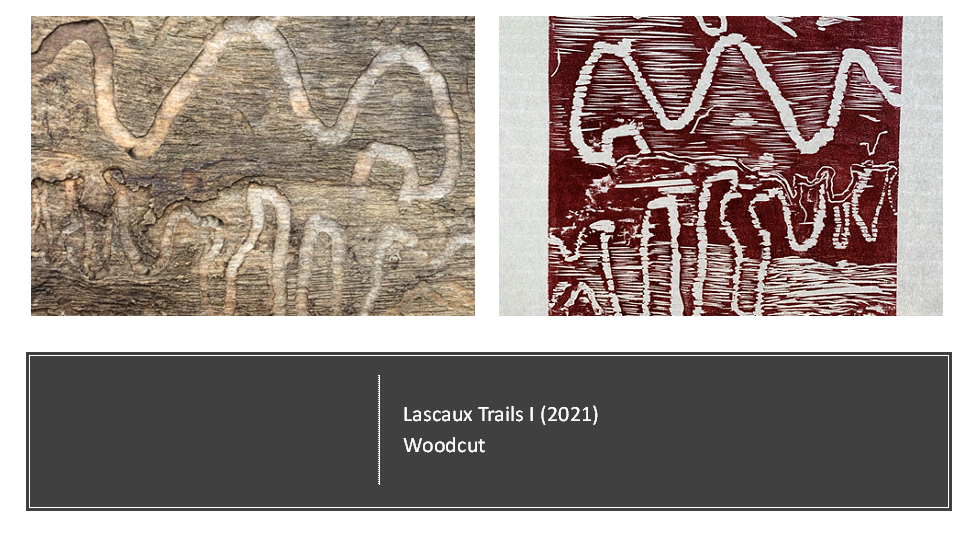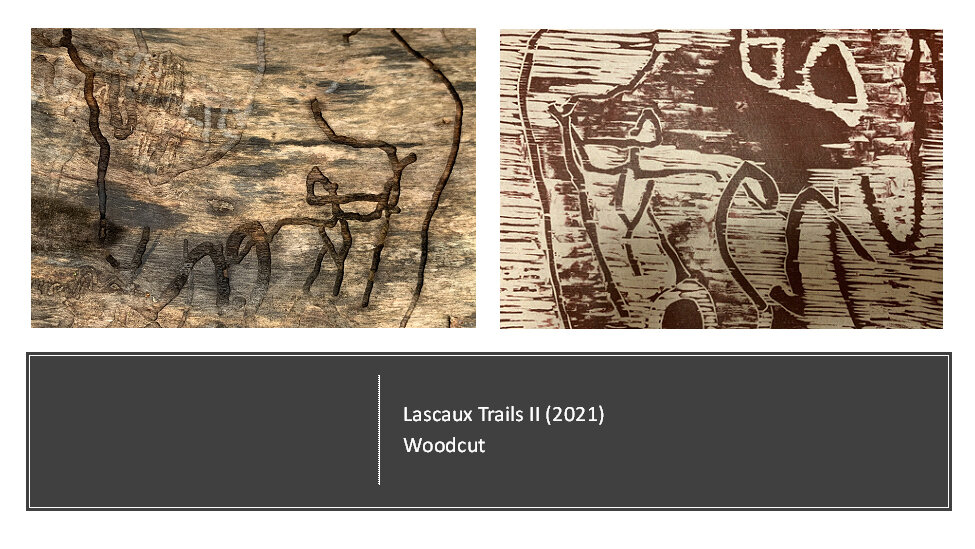What Happens if a Dot goes for a Walk? Exploring Creative Inspiration for Expressive Mark Making.
Creative inspiration for expressive mark making: what are its origins, key themes and resulting application in the evolution of printmaking? People’s desire to communicate, share their experiences and effect change, whether of beliefs or behaviour is one driving force over time. As described in ‘The Complete Printmaker, this may be seen throughout history from prehistoric cave dwellers to the inventors of the printing press and unique techniques such as lithography; and in both the works of great masters such as Rembrandt, to modern-day contemporary artists such printmaker Delita Martin who is changing the way we view African American women.
In my own printmaking practice in 2021, nature, its patterns and its healing abilities are emerging as central themes in my work especially as the pandemic has led me, as with many other people, to spend time exploring Ottawa’s local woodland trails. Artist Paul Klee is quoted as saying ‘A line is a dot that went for a walk.’ I would turn this around to say my dots emerged from my walks.
Traversing the trails of Mer Bleu bog this past year with camera in hand, I became fascinated by the winding patterns I began to see on the bare wood of downed trees who had lost some of their bark. Light-coloured and only a few millimeters deep, they are easy to see in contrast to the muted greys or earthy tones of the tree trunks. Created by ash or other wood-boring insects, these random patterns made me think of mammoths, or other large mammals depicted in cave paintings.
One of the ‘most impressive and well-known artistic creations of Paleolithic humans,’ are the painted walls of the Lascaux caves discovered in 1940 in southwestern France. Dating from about 15,000 BCE, the Lascaux caves include paintings and engravings depicting horses, bison, mammoths, ibex, aurochs, deer, lions, bears, and wolves and cows; that is, both prey and predators. The paintings are outlined in black, possibly applied with moss or clumped hair. The painters would have used hollow bones to blow on colours ‘derived from readily available minerals and include red, yellow, black, brown, and violet.’
Inspired both by nature and those earliest of artworks, I decided to experiment with replicating the wood borer ‘artworks’ I’d captured on camera. Relief printmaking, in which an image is carved out of a surface, seemed the most appropriate given the earliest printmakers, according to ‘The Complete Printmaker, (p.3), are said to trace back to prehistoric time. As with the engravings found in the Lascaux caves, rock carvings or petroglyph images were created by cave dwellers by incising, carving, picking, or abrading a rock face to create their own iconography often for ceremonial purposes.
To create ‘Lascaux Trails I, II and III’, I carved three pieces of birch wood to mirror the images I had captured of what I saw as imaginary mammals (Lascaux I and III) and dancing people (Lascaux II). To give the resulting prints a more primitive feel, I decided to hand-print them using rice paper and a mixture of Caligo safe wash ink mixed to resemble red ochre. Not having a baren at home, I used an old doorknob to press the ink into the wood surface. The inspirational photos and resulting prints may be seen in the accompanying images.
Printmaking is based on expressive mark-making and a desire to communicate knowledge and ideas with the world. What inspires each printmaker may vary depending upon their time in history, their artistic community, or their social, political, religious, or political influences or circumstances. Throughout my life, it is my being active in, and exploration of, the natural world that has helped me through challenges including the current pandemic. Drawing upon my new knowledge of art history, I am building a new vocabulary and body of works inspired by nature with just a touch of whimsy. The ‘Lascaux Trails’ prints are just one set in a new series of more abstract prints and artworks I am developing. I plan to share more in future blogs.
In the meantime, please do reach out to me and let me know: What is your source of inspiration? You can reach me at siobhan.arnott@hotmail.com or through my Contact page.




